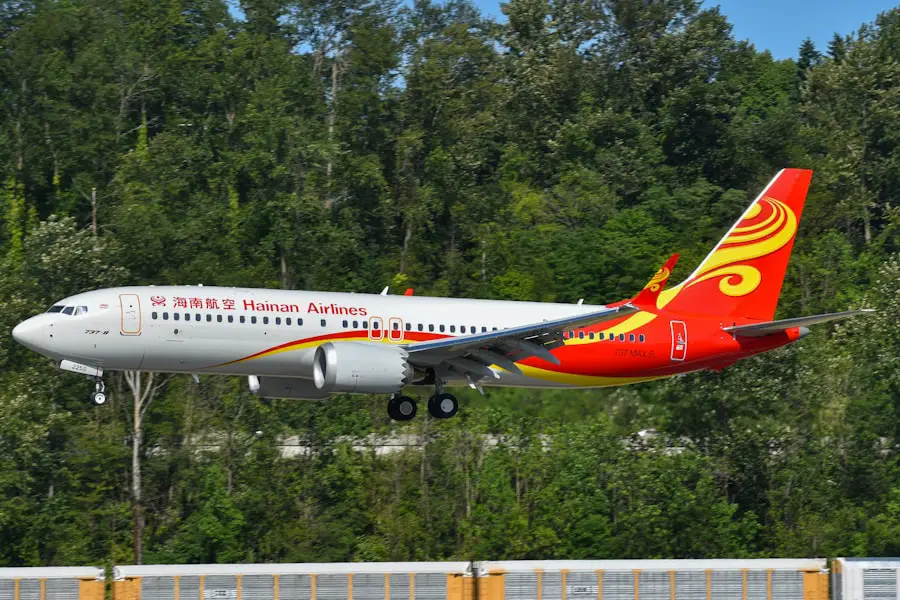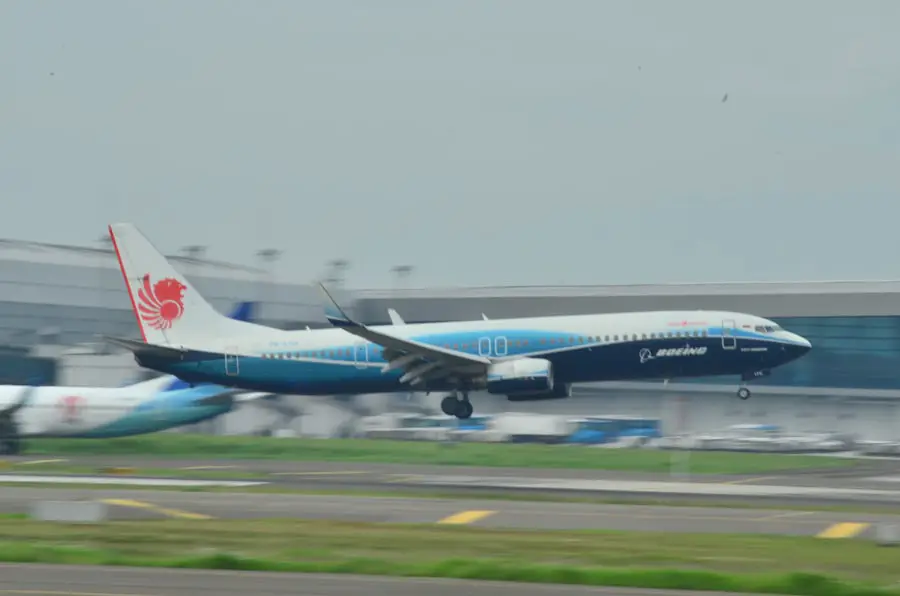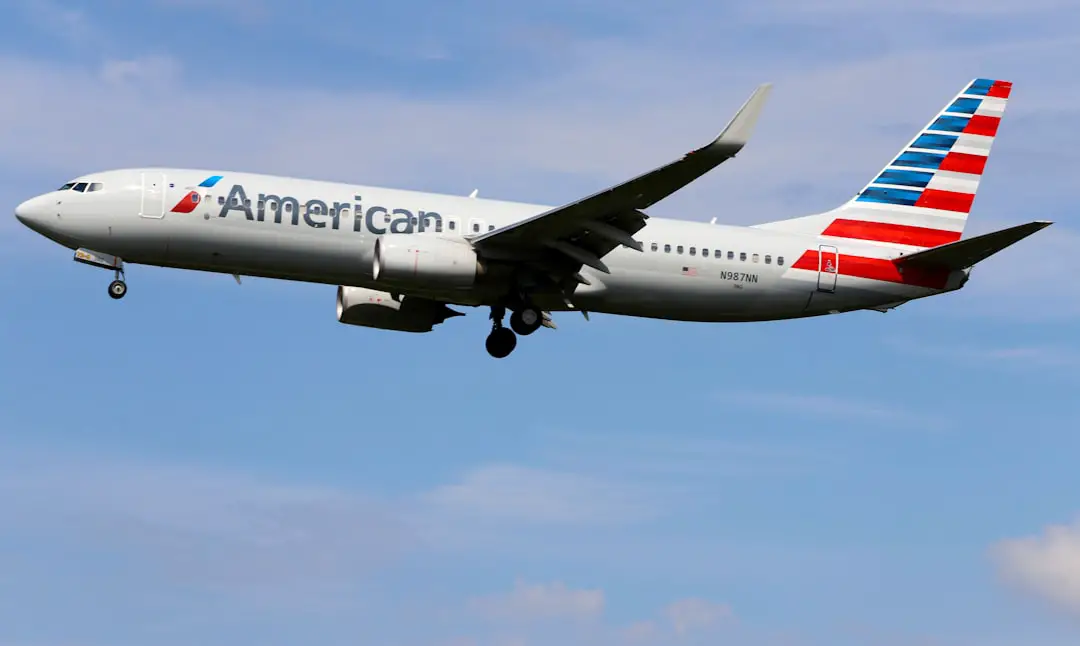Boeing, a name synonymous with aviation excellence, has been at the forefront of aircraft manufacturing for over a century. Founded in 1916, the company has evolved from a small manufacturer of seaplanes to one of the largest aerospace companies in the world. Boeing’s aircraft are renowned for their engineering prowess, innovative designs, and operational efficiency.
The company produces a wide range of commercial and military aircraft, including the iconic 737, 747, 777, and 787 Dreamliner. Each model is a testament to Boeing’s commitment to pushing the boundaries of technology and performance in aviation. The significance of Boeing planes extends beyond their physical presence in the skies; they represent a critical component of global transportation infrastructure.
Airlines around the world rely on Boeing aircraft to connect cities, facilitate trade, and enable travel for millions of passengers each year. The company’s influence on the aviation industry is profound, shaping not only the design and functionality of aircraft but also the operational practices of airlines. As we delve deeper into Boeing’s history, advantages, and innovations, it becomes clear that the company’s impact on aviation is both extensive and enduring.
Key Takeaways
- Boeing is a leading manufacturer of commercial airplanes, known for its innovation and technological advancements.
- Boeing has a rich history and has had a significant impact on the aviation industry, shaping the way people travel around the world.
- Major airlines benefit from using Boeing planes due to their reliability, fuel efficiency, and advanced technology.
- Boeing is committed to safety and reliability, ensuring that their planes meet the highest standards for passenger and crew well-being.
- Boeing planes offer cost-effectiveness for major airlines, providing a balance between operational efficiency and passenger comfort.
History of Boeing and its Impact on the Aviation Industry
The Early Years: World War I and the Post-War Period
The company played a pivotal role during World War I by producing military aircraft, but it was during the post-war period that Boeing began to establish itself as a commercial airline manufacturer. The introduction of the Model 40 in the 1920s, which served as a mail plane and passenger carrier, set the stage for future innovations.
Revolutionizing Air Travel: The 707 Jetliner
The post-World War II era saw Boeing revolutionize air travel with the introduction of the 707 jetliner in 1958. This aircraft was instrumental in ushering in the age of commercial jet travel, significantly reducing flight times and increasing passenger capacity.
A New Era of Global Travel and Commerce
The success of the 707 not only solidified Boeing’s position in the aviation market but also transformed global travel patterns. As airlines expanded their fleets with Boeing jets, air travel became more accessible to the general public, leading to an unprecedented increase in international tourism and commerce.
Advantages of Boeing Planes for Major Airlines

Boeing planes offer numerous advantages that make them a preferred choice for major airlines around the globe. One of the most significant benefits is their operational efficiency. Aircraft like the Boeing 737 MAX and 787 Dreamliner are designed with advanced aerodynamics and lightweight materials that enhance fuel efficiency.
This translates to lower operating costs for airlines, allowing them to offer competitive fares while maintaining profitability. The ability to operate longer routes with fewer stops also enables airlines to optimize their schedules and improve overall service. Another advantage lies in Boeing’s extensive range of aircraft models tailored to meet diverse operational needs.
From short-haul flights with the 737 series to long-haul international travel with the 777 and 787 models, airlines can select aircraft that best fit their route structures and passenger demands. This flexibility allows airlines to adapt quickly to changing market conditions and passenger preferences, ensuring they remain competitive in an ever-evolving industry.
Boeing’s Commitment to Safety and Reliability
| Metrics | Data |
|---|---|
| Number of Safety Inspections Conducted | 500+ |
| Percentage of On-Time Maintenance | 98% |
| Number of Safety Training Hours Completed | 10,000+ |
| Reliability Rating | 5 stars |
Safety is paramount in aviation, and Boeing has established itself as a leader in this critical area. The company adheres to rigorous safety standards throughout its design and manufacturing processes. Each aircraft undergoes extensive testing before entering service, including simulations of various flight conditions and emergency scenarios.
This commitment to safety is reflected in Boeing’s continuous investment in research and development aimed at enhancing aircraft performance and reliability. Boeing’s reputation for reliability is further bolstered by its comprehensive maintenance programs and support services for airlines. The company provides detailed maintenance manuals, training programs for airline technicians, and access to advanced diagnostic tools that help airlines maintain their fleets efficiently.
This proactive approach not only minimizes downtime but also ensures that aircraft remain in optimal flying condition, thereby enhancing passenger safety.
Cost-Effectiveness of Boeing Planes for Major Airlines
The cost-effectiveness of Boeing planes is a significant factor that attracts major airlines to their fleet offerings. Fuel efficiency is one of the primary contributors to this cost-effectiveness. For instance, the Boeing 787 Dreamliner utilizes advanced composite materials that reduce weight while improving fuel efficiency by up to 20% compared to previous generation aircraft.
This reduction in fuel consumption translates directly into lower operating costs for airlines, which is particularly crucial given the volatility of fuel prices. In addition to fuel savings, Boeing planes are designed for ease of maintenance, which further enhances their cost-effectiveness. The use of modular components allows for quicker repairs and replacements, minimizing aircraft downtime.
Airlines can schedule maintenance more efficiently, ensuring that their fleets remain operational without incurring excessive costs associated with prolonged ground time. This combination of fuel efficiency and maintenance ease positions Boeing as a financially savvy choice for airlines looking to optimize their operations.
Range and Capacity of Boeing Planes

Short- to Medium-Haul Routes
The Boeing 737 series is particularly popular among airlines operating short- to medium-haul routes due to its versatility and efficiency. With different variants available, airlines can choose models that accommodate anywhere from 85 to over 200 passengers, making it an ideal choice for both low-cost carriers and full-service airlines.
Long-Haul Travel
On the other end of the spectrum, long-haul models like the Boeing 777 and 787 Dreamliner are designed for intercontinental travel, boasting impressive ranges that allow airlines to connect distant cities without layovers.
Enhancing Passenger Convenience
The 787 Dreamliner can fly up to 7,530 nautical miles (about 14,140 kilometers), enabling airlines to serve routes that were previously unfeasible with older aircraft models. This capability not only expands an airline’s network but also enhances passenger convenience by reducing travel times.
Boeing’s Innovation and Technological Advancements
Boeing has consistently been at the forefront of innovation within the aviation industry, introducing groundbreaking technologies that enhance performance and passenger experience. One notable advancement is the incorporation of fly-by-wire technology in its aircraft designs. This system replaces traditional mechanical controls with electronic interfaces, allowing for more precise handling and improved safety features.
The result is an aircraft that responds more effectively to pilot inputs while also providing enhanced stability during flight. Another significant innovation is found in the materials used in modern Boeing aircraft. The extensive use of composite materials in models like the 787 Dreamliner not only reduces weight but also improves fuel efficiency and durability.
These materials are resistant to corrosion and fatigue, leading to lower maintenance costs over an aircraft’s lifespan. Additionally, advancements in aerodynamics have led to designs that minimize drag, further enhancing fuel efficiency and overall performance.
Environmental Considerations and Fuel Efficiency of Boeing Planes
As environmental concerns continue to shape global policies and consumer preferences, Boeing has made significant strides toward developing more sustainable aviation solutions. The company’s commitment to reducing its carbon footprint is evident in its ongoing efforts to enhance fuel efficiency across its fleet. For instance, the latest models are designed with engines that produce fewer emissions while delivering superior performance.
Boeing has also invested in research related to alternative fuels and sustainable aviation technologies. The use of biofuels has gained traction as a viable option for reducing greenhouse gas emissions associated with air travel. By collaborating with various stakeholders—including airlines, fuel producers, and regulatory bodies—Boeing aims to facilitate the adoption of sustainable fuels across its fleet, contributing to a greener future for aviation.
Boeing’s Customer Support and Service
Boeing recognizes that customer support is a critical component of its business model, particularly given the complexities involved in operating commercial aircraft. The company offers comprehensive support services designed to assist airlines throughout the lifecycle of their fleets. This includes everything from initial training for flight crews and maintenance personnel to ongoing technical support as needed.
Boeing’s Global Services division provides tailored solutions that address specific airline needs, including parts supply chain management, maintenance training programs, and digital solutions for fleet management. By leveraging data analytics and predictive maintenance technologies, Boeing helps airlines optimize their operations while minimizing costs associated with unscheduled maintenance or parts shortages.
Case Studies of Major Airlines Using Boeing Planes
Several major airlines have successfully integrated Boeing planes into their fleets, showcasing the advantages these aircraft offer in real-world operations. For example, American Airlines operates one of the largest fleets of Boeing aircraft globally, including models such as the 737 MAX and 787 Dreamliner. The airline has reported significant fuel savings with its newer models while expanding its route network to include more international destinations.
Similarly, Qatar Airways has made headlines for its commitment to modernizing its fleet with advanced Boeing aircraft like the 777X and 787 Dreamliner. The airline has emphasized passenger comfort through innovative cabin designs while benefiting from improved operational efficiency. These case studies illustrate how major airlines leverage Boeing’s technological advancements and operational efficiencies to enhance their service offerings while maintaining profitability.
Future Prospects and Developments in Boeing’s Aircraft Lineup
Looking ahead, Boeing continues to innovate and adapt its aircraft lineup to meet evolving market demands and environmental challenges. The development of new models such as the 737 MAX series reflects a commitment to enhancing fuel efficiency while providing airlines with versatile options for various route structures. Additionally, ongoing research into electric propulsion systems indicates a forward-thinking approach toward sustainable aviation solutions.
Boeing is also exploring advancements in autonomous flight technology as part of its long-term vision for aviation. While fully autonomous commercial flights may still be years away from becoming a reality, ongoing research into automation could lead to enhanced safety features and operational efficiencies in future aircraft designs. As global air travel continues to grow post-pandemic, Boeing’s ability to adapt its offerings will be crucial in maintaining its leadership position within the aviation industry.
In summary, Boeing’s rich history, commitment to innovation, focus on safety and reliability, along with its customer-centric approach have solidified its status as a cornerstone of modern aviation. As it navigates future challenges and opportunities within an ever-evolving industry landscape, Boeing remains poised to shape the future of air travel for generations to come.
If you’re a frequent traveler who often flies on airlines that use Boeing planes, you may want to consider investing in one of the 5 best travel pillows for long flights this spring. These pillows can provide much-needed comfort and support during your journey. Check out the article here for more information on how to make your next flight more enjoyable.
FAQs
What airlines use Boeing planes?
Some of the major airlines that use Boeing planes include American Airlines, Delta Air Lines, United Airlines, Southwest Airlines, and Lufthansa.
Why do airlines use Boeing planes?
Airlines choose Boeing planes for their reliability, fuel efficiency, and range capabilities. Boeing planes are also known for their advanced technology and passenger comfort.
How many Boeing planes are in service worldwide?
As of 2021, there are over 10,000 Boeing planes in service worldwide, including various models such as the 737, 747, 767, 777, and 787.
Which Boeing plane is the most widely used by airlines?
The Boeing 737 is the most widely used Boeing plane by airlines around the world. It is a popular choice for short to medium-haul flights.
Are there any low-cost airlines that use Boeing planes?
Yes, several low-cost airlines use Boeing planes, including Southwest Airlines in the United States and Ryanair in Europe. These airlines utilize Boeing planes for their cost-effectiveness and operational efficiency.
